UltraFire H2 (HXY-H2)
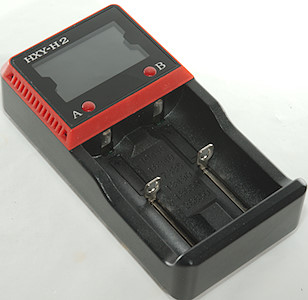
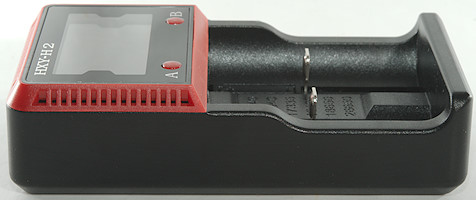
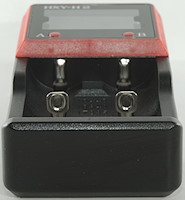
I got this charger as an UltraFire, but the original brand is still on the charger.

The charger arrived in a brown cardboard box without any printing on it.
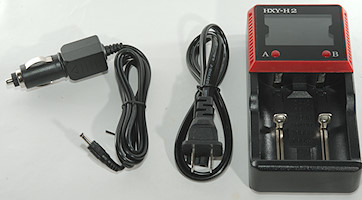
The pack contained the charger, usb cable, car cable, but no instruction sheet.
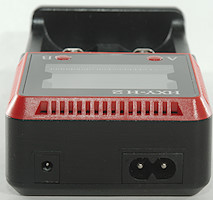
The charger is powered from mains or from 12V with a small barrel connector.
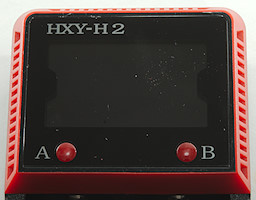
The charger has a LCD display and a button for each slot. Pressing the button will show the selected current, pressing again will change selected current. Holding down the button for 10 seconds will select LiFePO4.
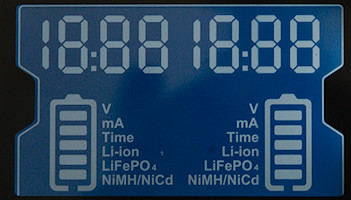
All the segments on the display.
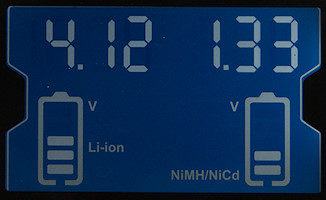
Voltage readout during charging.

Actual current. The top bar in the batteries are animated while charging.

Time used.
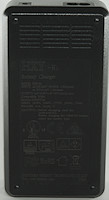
There is specifications and approval marks on the back.
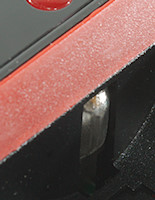

The charger uses the typical slider construction, it can handle batteries from 32mm to 71mm.



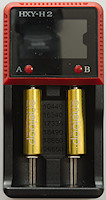


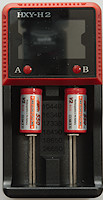
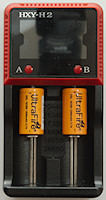
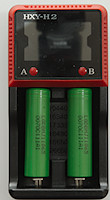
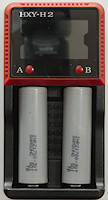

The charger can handle 70mm long batteries, inclusive flat top cells, this means most protected cells.
Measurements charger
- LiIon and NiMH Batteries will be discharged with 0.3mA when power is off.
- Default charger current is 0.5A
- Below 0.2 volt the charger reports "Err"
- Between 0.2 volt and 2 volt charger assumes battery to be NiMH
- Above 2 volt a battery is assumed to be LiIon.
- Voltmeter is within 0.01V
- Voltmeter stops updating when the charging stops.
- Charger will not restart if battery voltage drops.
- Charger will restart charging after power loss, or battery insertion.
- Power consumption when idle is 0.55 watt with display off.
Charging 4.20 volt LiIon
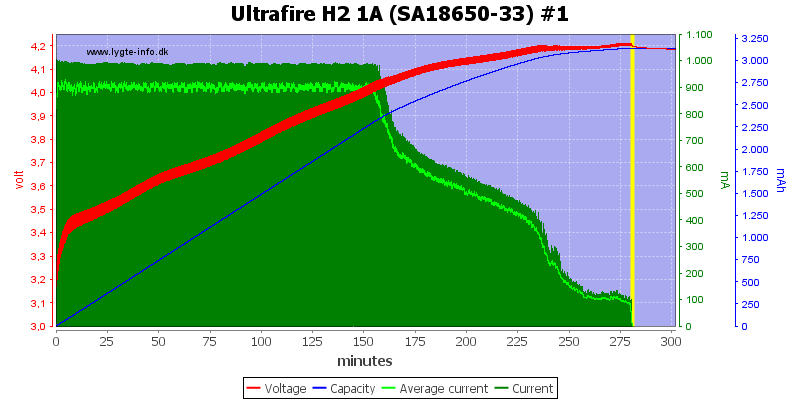
This looks like a good CC/CV charge curve with about 100mA termination current. The pulsing current probably means it uses simulated CC/CV charging.
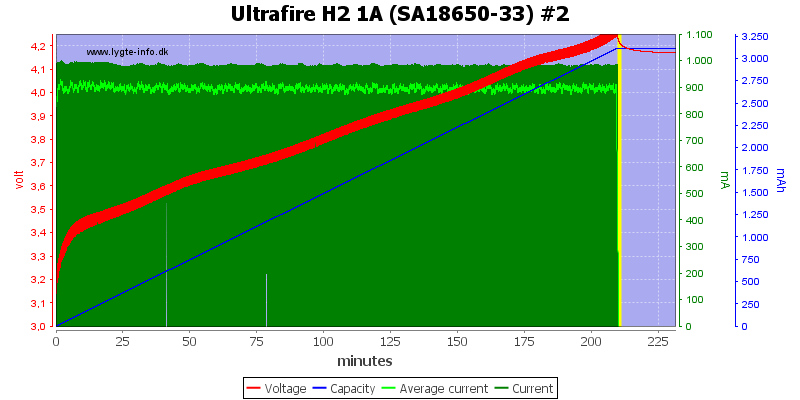
Something went wrong here, the charger use CC and never enters the CV phase, this means the voltage goes above the allowed 4.25V, but not very much. The battery is not charged fully, but not that far from it. I did this curve twice, both looked the same.
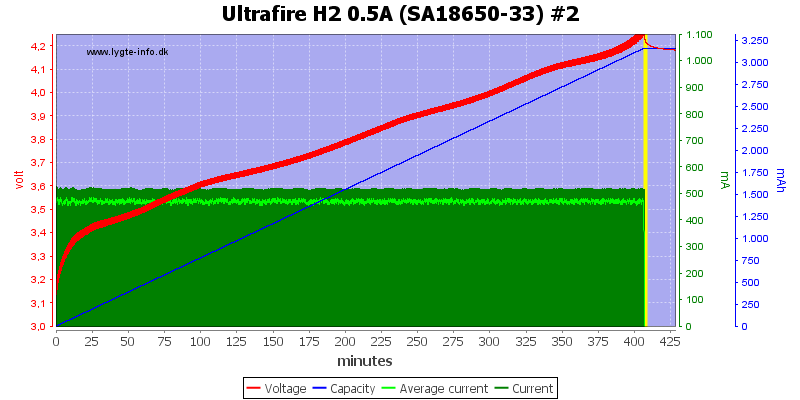
Slot #2 did not work at 1A, how about 0.5A? It is the same, no CV phase.

Nice charging, the termination current is different here, because it is not used for terminating the charger.
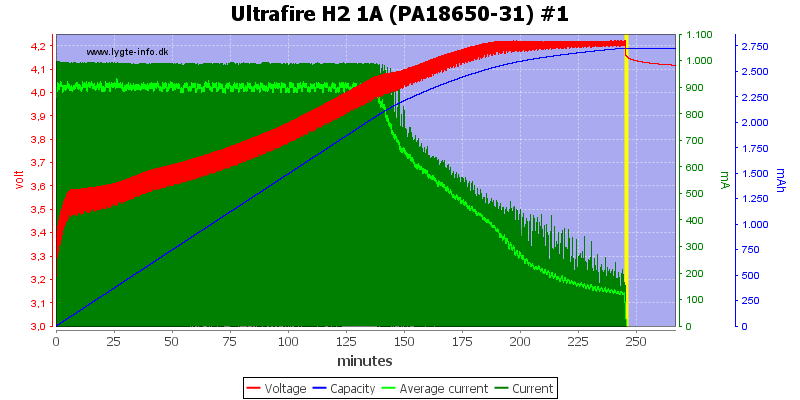
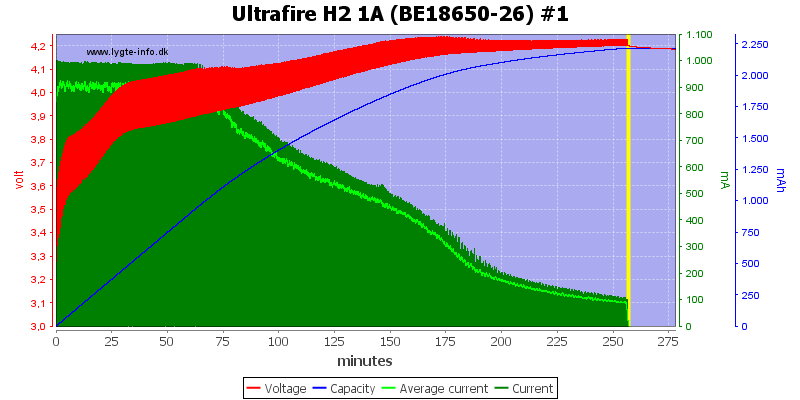
Both these batteries are nicely charged.
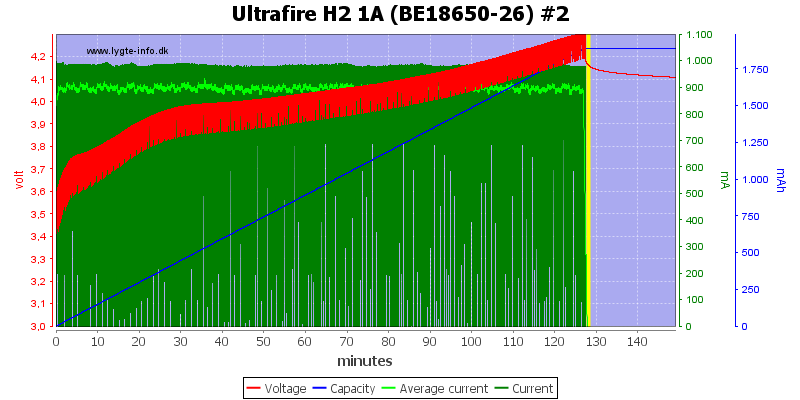
But that was on slot #1, what about slot #2, as expected the voltage is higher (4.3V) and the final result is only 4.1V, this is the problem with using the wrong charging algorithm.
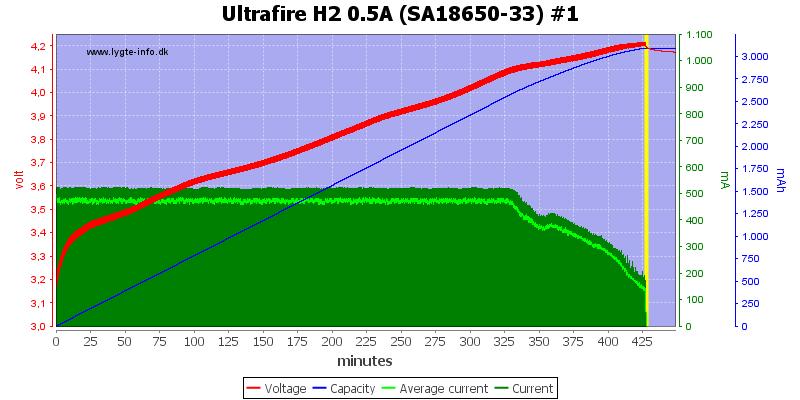
Low current works fine.
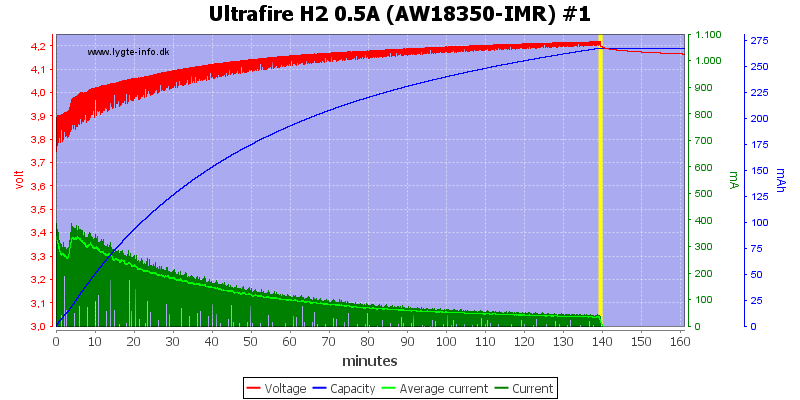
This old and worn down cell is nicely charged.
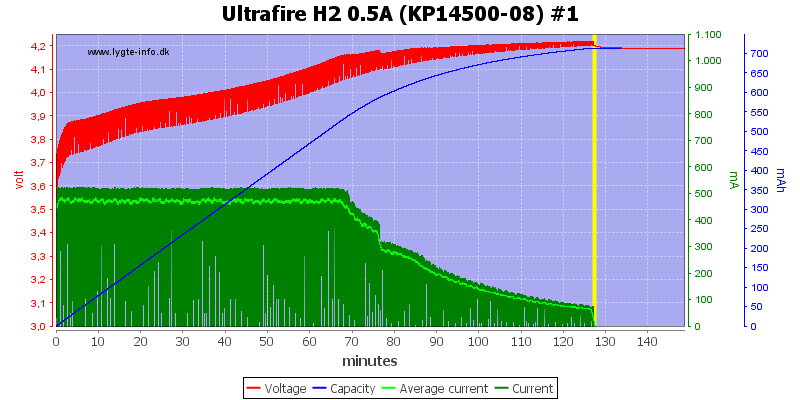
This cell is much easier to charge and is also handled nicely.
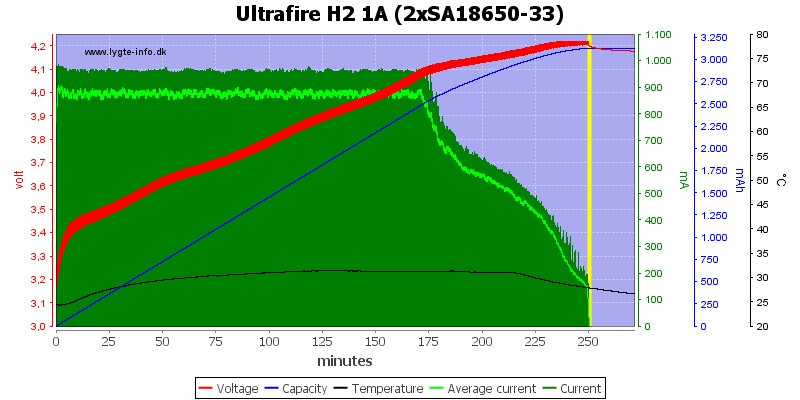
Two cells at 1A works fine at least on slot #1.
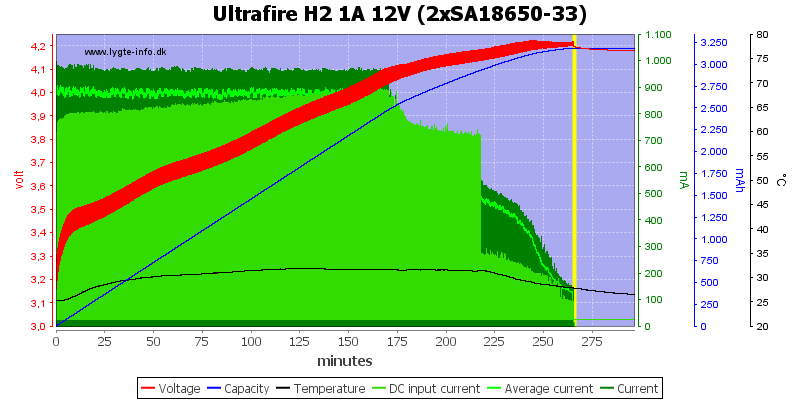
The charger uses about 0.9A from 12V for it.
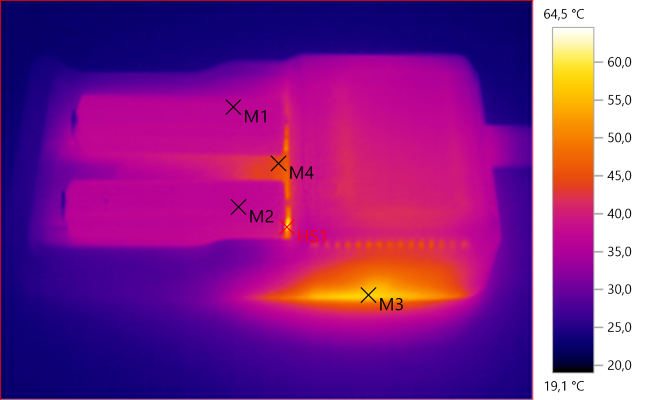
M1: 36.7°C, M2: 37.1°C, M3: 57.6°C, M4: 44.6°C, HS1: 64.5°C
Some parts inside the charger get warm, but the batteries are fine.
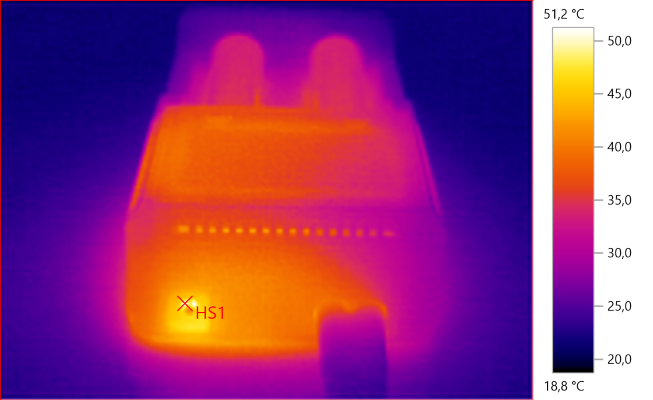
HS1: 51.2°C

The charger needs about 4 seconds to start.
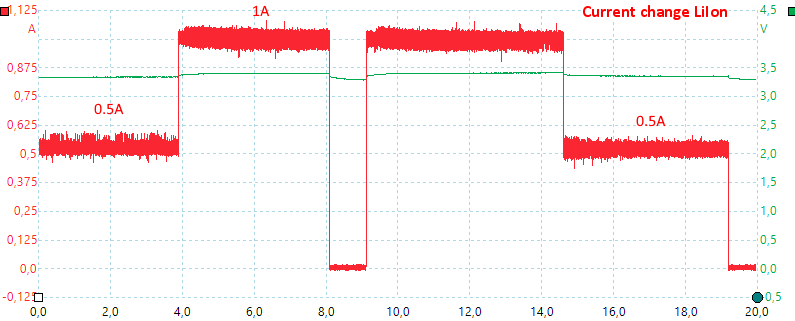
There is no problem with changing current while charging. It requires two pressed on the button, first press will show the actual charge current, next press will change it.
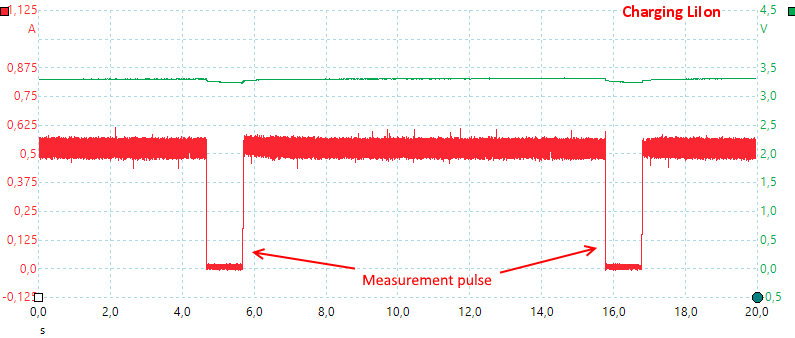
The charger measures voltage with current turned off.
Charging 3.60 volt LiIon (LiFePO4)
Selecting LiFePO4 is non-obvious without a manual. The button must be held down for 10 seconds!
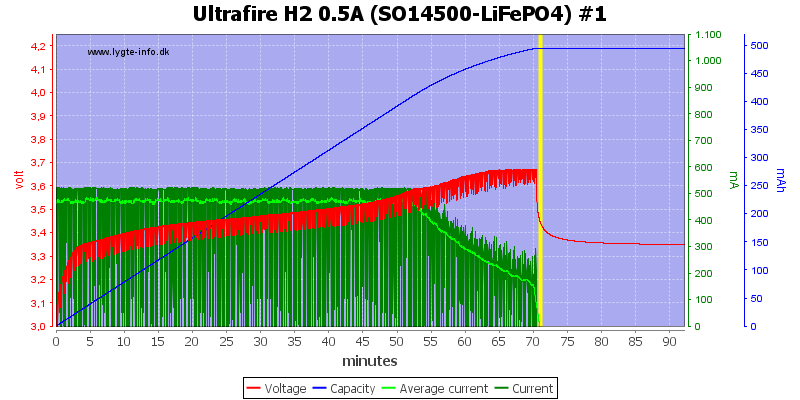
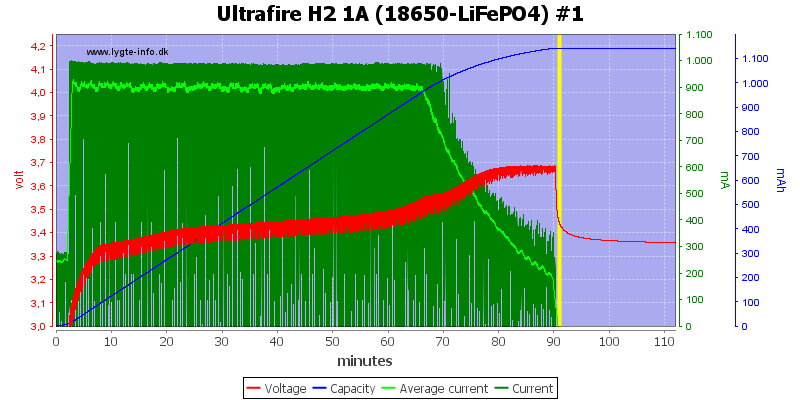
Charging LiFePO4 works fine (On slot #1, I did not try #2), they are charged to 3.65V
Charging NiMH
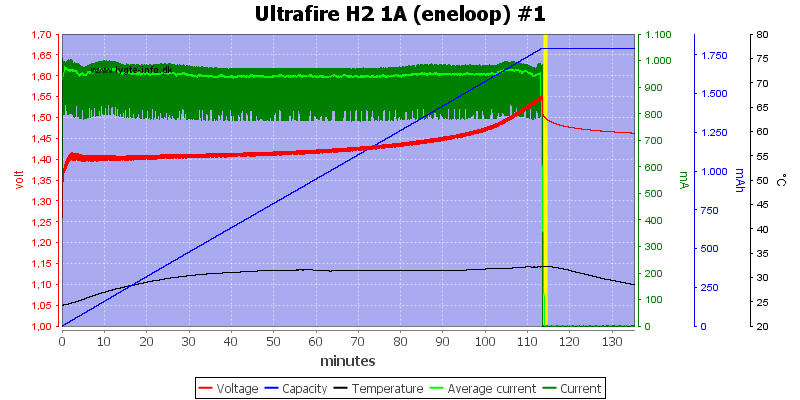
The NiMH charging stops a slightly premature, but not much, it looks loke the temperature is just about to raise.
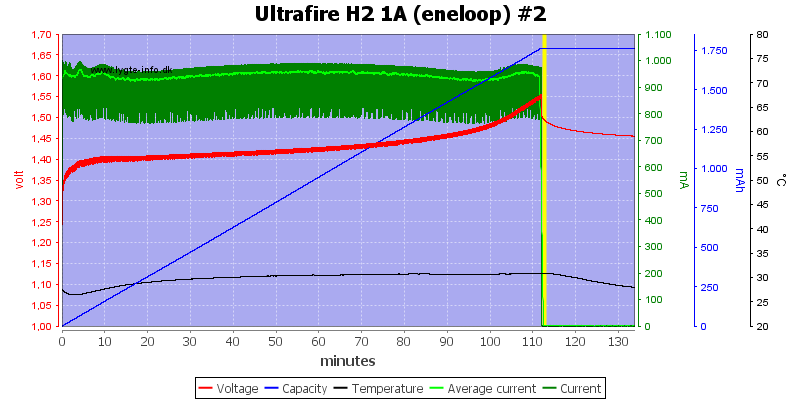
On the second channel it is also a bit premature.

With the eneloopPro the charger stops way before the cell is charged.
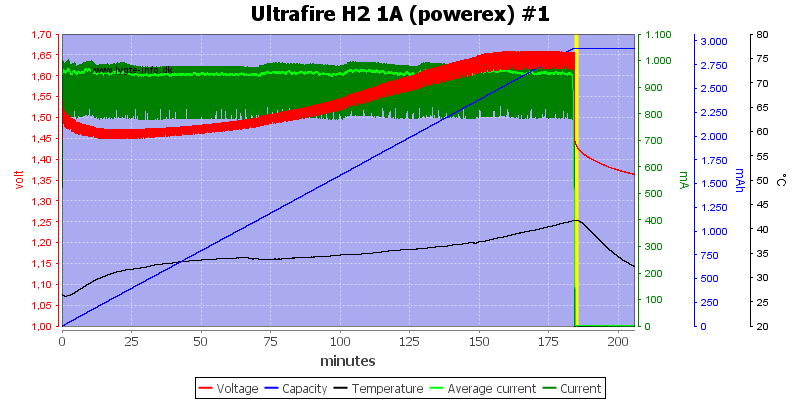
This old cell is handled correctly, it stops when the cell heats up.
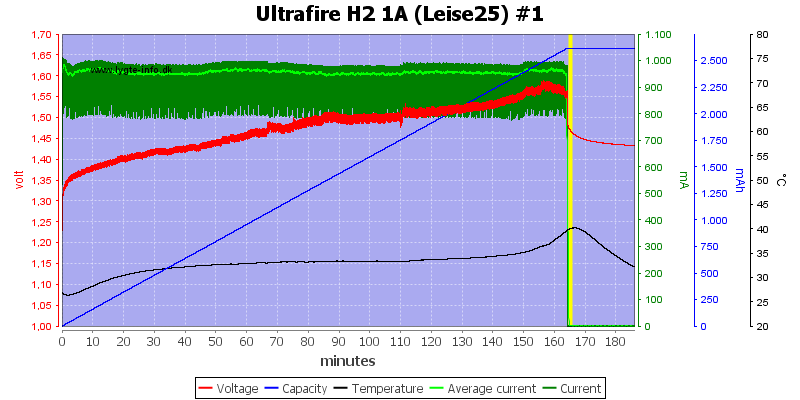
This is a cheap Chinese cell and is charged nicely.
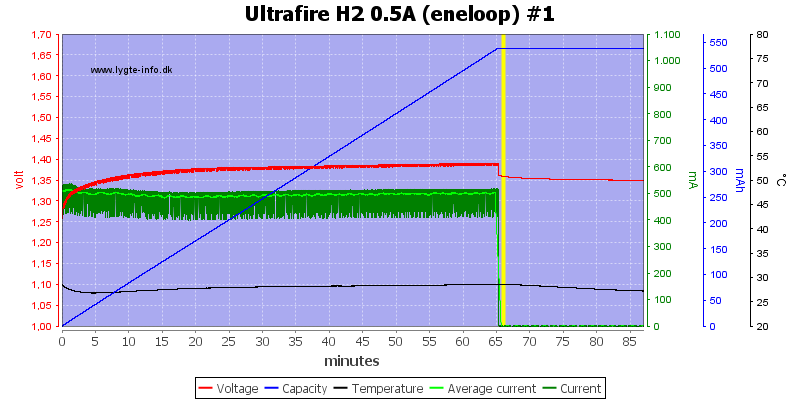
Using low charge current do not really work with this cell, the charger stops way to early.

It works better with the AAA, but it stops too early again.
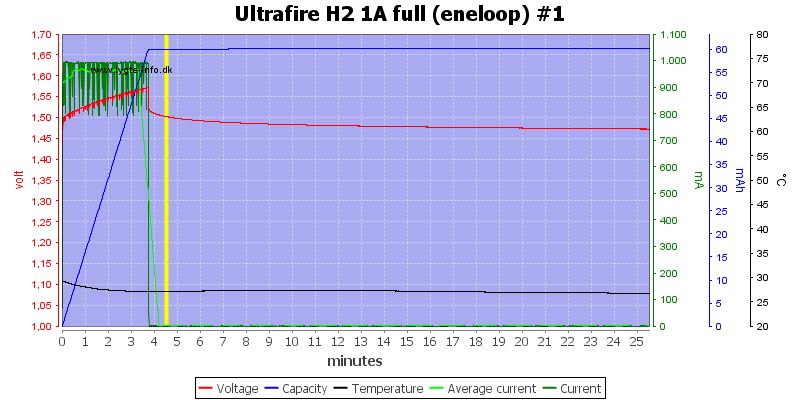
There is no problem stopping with a full cell.
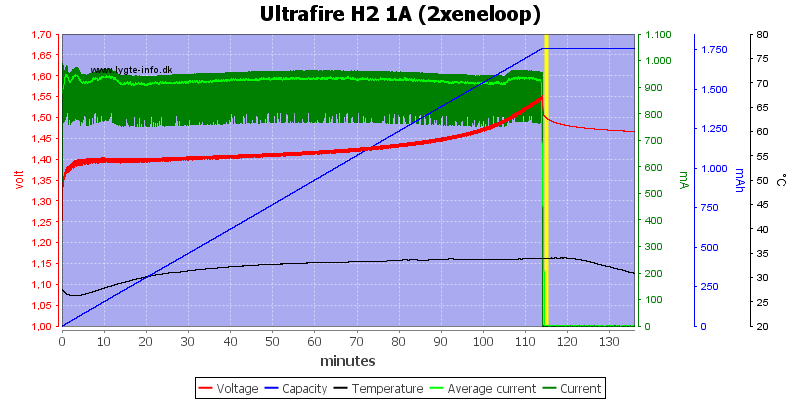
Two cells are also nearly charged.
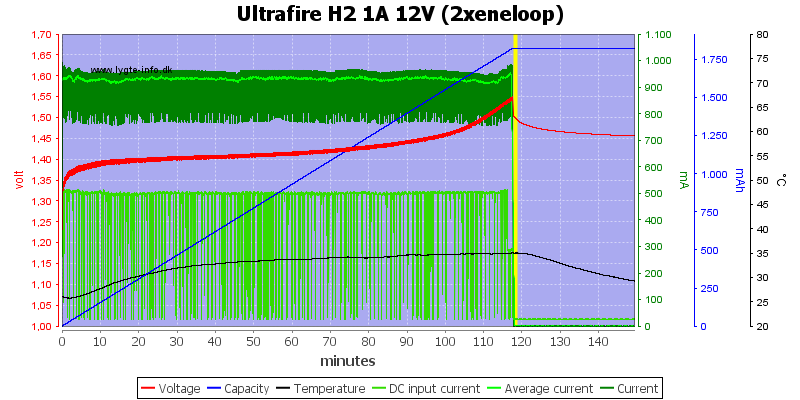
It requires about 0.5A from 12V to charge two NiMH cells.
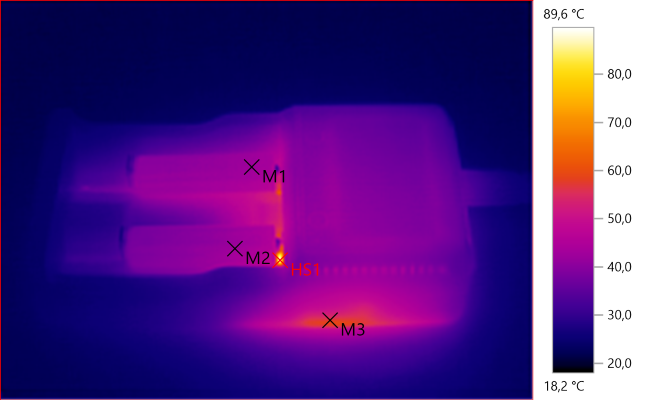
M1: 42.6°C, M2: 42.8°C, M3: 57.4°C, HS1: 89.6°C
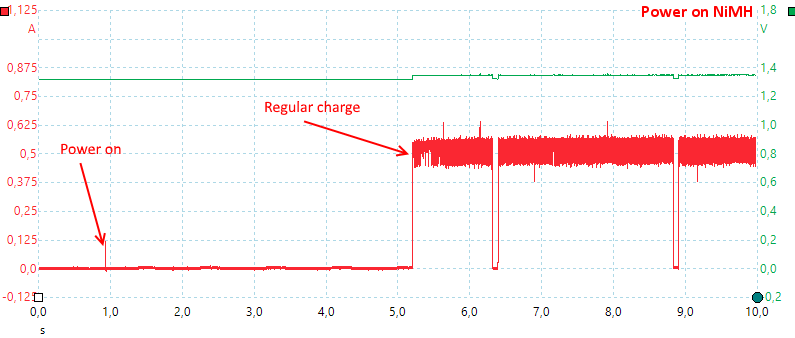
The charger needs about 4 seconds to start.
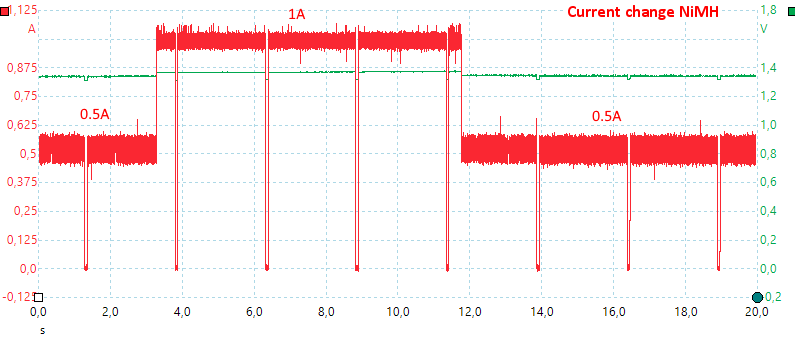
There is no problem with changing current while charging. It requires two pressed on the button, first press will show the actual charge current, next press will change it.
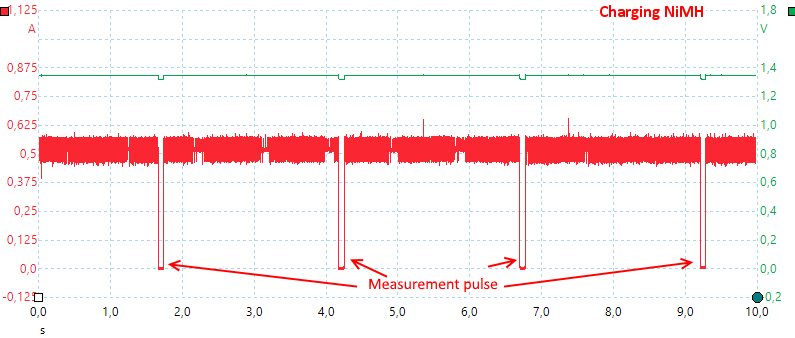
As usual for NiMH the charger measured voltage with current turned off and at a much faster pace than it do for LiIon.
Conclusion
The charger is fairly easy to use (LiFePO4 is a bit tricky to select) with a good display and has support for a large selection of battery sizes and chemistries.
Slot #1 works fairly well for LiIon, but slot #2 do not. This is the first time I have seen a charger with different charge algorithms in the two slots and hopefully also the last time!
NiMH do not always charge fully.
I will only rate it as useable (Two different LiIon charge algorithms is not acceptable).
Notes
The charger was supplied by Fasttech for review.
Here is an explanation on how I did the above charge curves: How do I test a charger
Read more about how I test USB power supplies/charger

























































